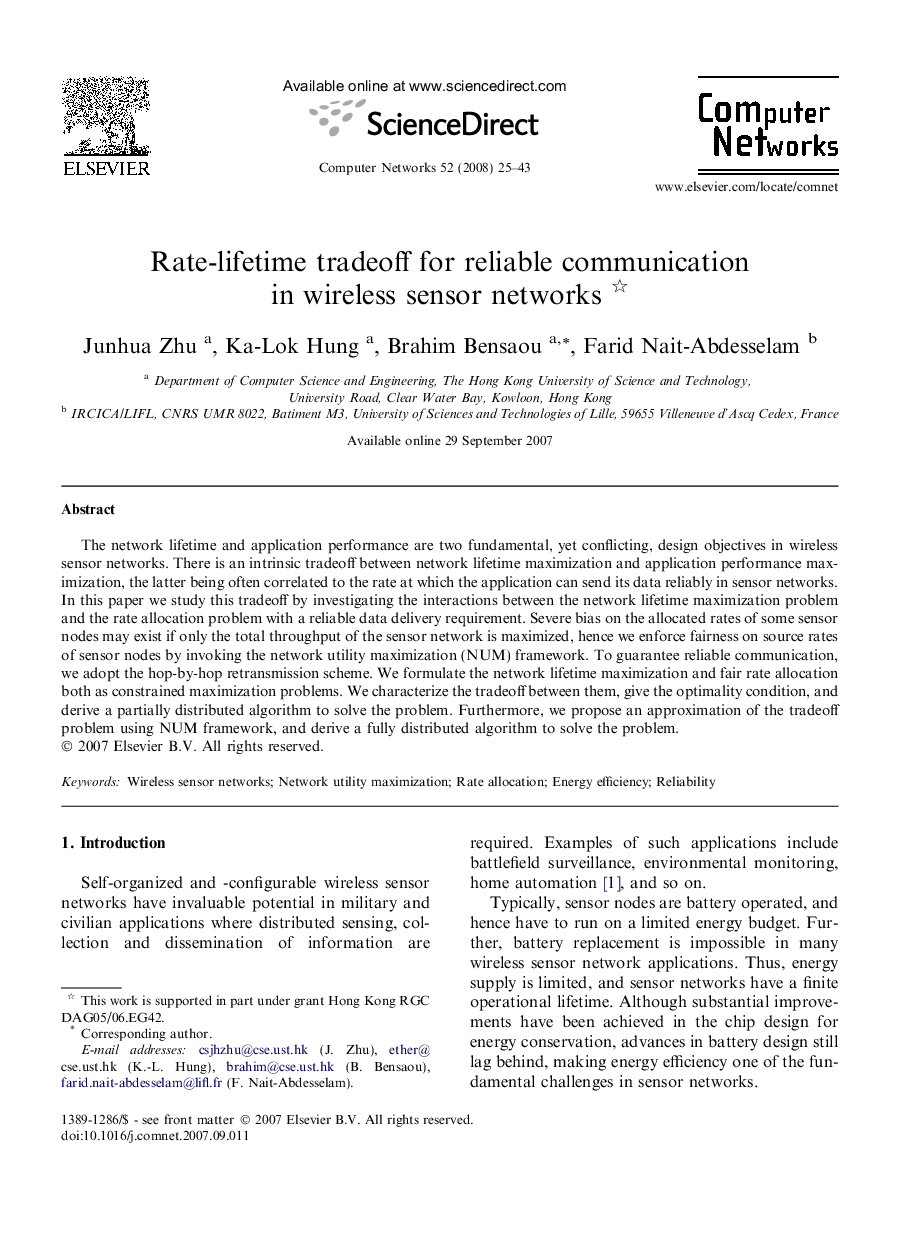| Article ID | Journal | Published Year | Pages | File Type |
|---|---|---|---|---|
| 451457 | Computer Networks | 2008 | 19 Pages |
The network lifetime and application performance are two fundamental, yet conflicting, design objectives in wireless sensor networks. There is an intrinsic tradeoff between network lifetime maximization and application performance maximization, the latter being often correlated to the rate at which the application can send its data reliably in sensor networks. In this paper we study this tradeoff by investigating the interactions between the network lifetime maximization problem and the rate allocation problem with a reliable data delivery requirement. Severe bias on the allocated rates of some sensor nodes may exist if only the total throughput of the sensor network is maximized, hence we enforce fairness on source rates of sensor nodes by invoking the network utility maximization (NUM) framework. To guarantee reliable communication, we adopt the hop-by-hop retransmission scheme. We formulate the network lifetime maximization and fair rate allocation both as constrained maximization problems. We characterize the tradeoff between them, give the optimality condition, and derive a partially distributed algorithm to solve the problem. Furthermore, we propose an approximation of the tradeoff problem using NUM framework, and derive a fully distributed algorithm to solve the problem.
